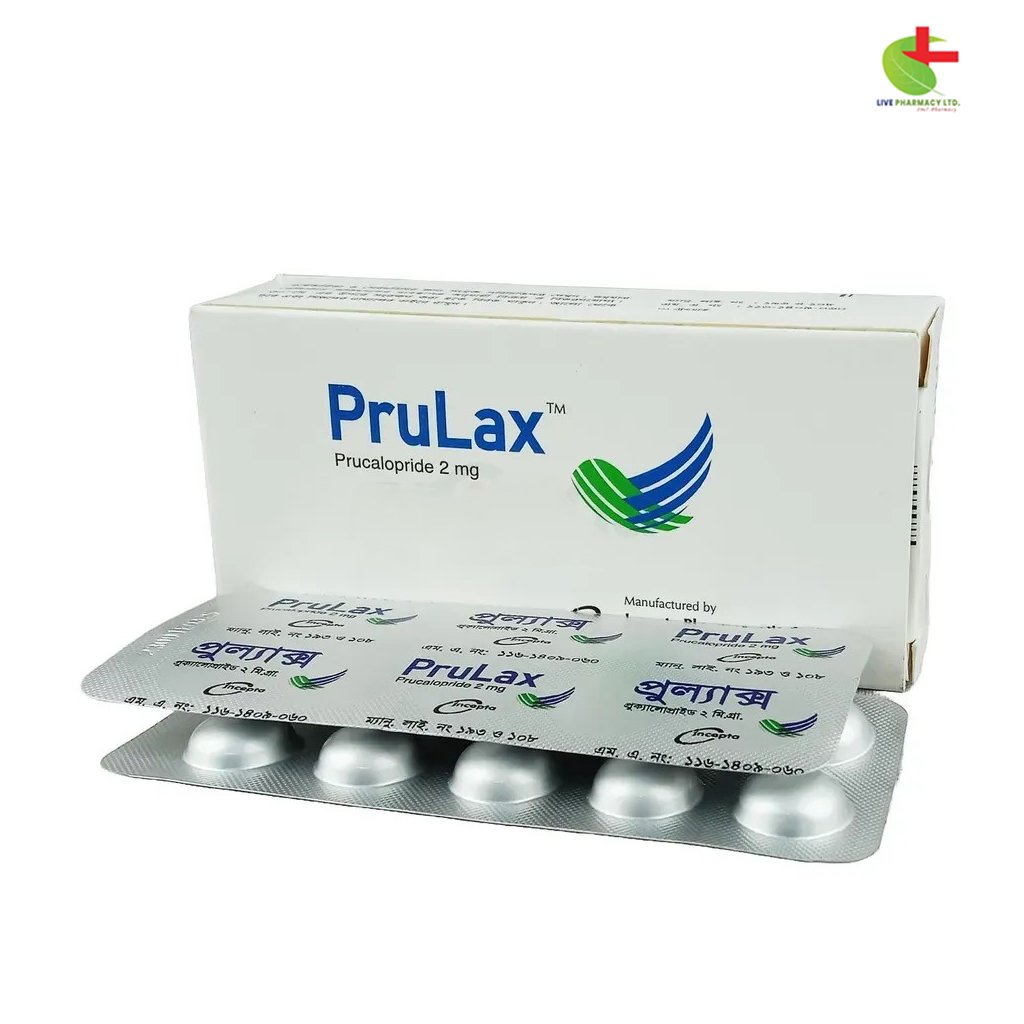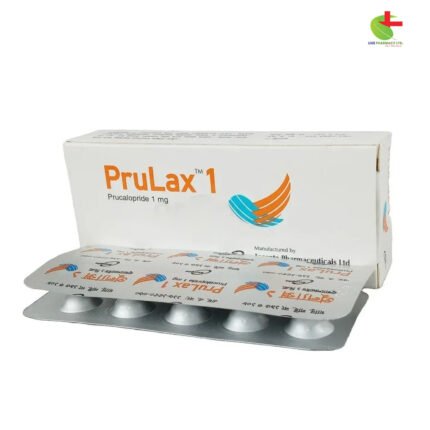Prulax 2
240.00৳ Strip
- PruLax is an effective treatment for chronic constipation in adults, especially when other laxatives fail.
- Contains prucalopride, which stimulates gastrointestinal motility by activating 5-HT4 receptors.
- Improves bowel movements and has a low cardiovascular risk profile.
- Should be used under the guidance of a healthcare professional.
 Brand
Brand
|
Incepta Pharmaceuticals Ltd |
|---|---|
 Generics
Generics
|
Prucalopride Succinate |
Indications:
PruLax is recommended for the relief of symptoms associated with chronic constipation in adults, especially when other laxatives have failed to provide sufficient relief.
Use only under the guidance of a registered healthcare professional.
Pharmacology:
Prucalopride, the active ingredient in PruLax, is a selective 5-HT4 receptor agonist. It stimulates gastrointestinal motility by enhancing the release of acetylcholine, which activates smooth muscle contractions in the colon and promotes the movement of luminal contents. Unlike similar drugs, Prucalopride does not interact with the hERG channel or 5-HT1 receptors, reducing cardiovascular risks.
Dosage & Administration:
- Adults: Start with 2 mg once daily, with or without food. Do not exceed 2 mg as higher doses do not increase efficacy.
- Older Adults: Begin with 1 mg once daily; can be increased to 2 mg as necessary.
- Children & Adolescents: PruLax is not recommended for individuals under 18 years old. Use as directed by a registered healthcare professional.
Drug Interactions:
PruLax has a low potential for interaction with other medications. When taken with strong inhibitors of CYP3A4 (e.g., ketoconazole), PruLax’s systemic exposure may increase by about 40%. However, this effect is unlikely to be clinically significant. PruLax does not significantly affect the metabolism of warfarin, digoxin, alcohol, paroxetine, or oral contraceptives.
Contraindications:
PruLax should not be used by patients who are hypersensitive to prucalopride or any of the excipients. It is also contraindicated in patients with severe renal impairment requiring dialysis.
Side Effects:
Common side effects include:
- Gastrointestinal: Abdominal pain, nausea, diarrhea.
- Central Nervous System: Headache. These effects are generally mild and tend to resolve after a few days of continued treatment.
Pregnancy & Lactation:
PruLax is not recommended for use during pregnancy. Women of childbearing potential should use effective contraception while using this medication. There is insufficient data regarding the safety of prucalopride during breastfeeding, and its use is not advised in nursing mothers.
Precautions & Warnings:
- Renal Impairment: For patients with severe renal impairment (GFR <30 mL/min), the dose should be reduced to 1 mg daily.
- Hepatic Impairment: Caution is required in patients with severe hepatic impairment (Child-Pugh class C). Start with 1 mg daily and adjust as needed.
- Other: PruLax contains lactose and should not be taken by patients with galactose intolerance or other related metabolic conditions.
Use in Special Populations:
- Renal Impairment: For severe renal impairment, administer 1 mg daily. No adjustment is needed for mild to moderate impairment.
- Hepatic Impairment: In patients with severe liver dysfunction, start with 1 mg daily, potentially increasing to 2 mg depending on efficacy and tolerance.
Overdose Effects:
Overdose symptoms may include nausea, diarrhea, and headache. There is no specific antidote for prucalopride overdose. Treatment is symptomatic, with fluids and electrolytes replaced as necessary.
Therapeutic Class:
Osmotic Purgatives
Storage Conditions:
Store PruLax at room temperature, below 30°C. Keep the desiccant in place and store in its original bottle to maintain efficacy.













Reviews
There are no reviews yet.